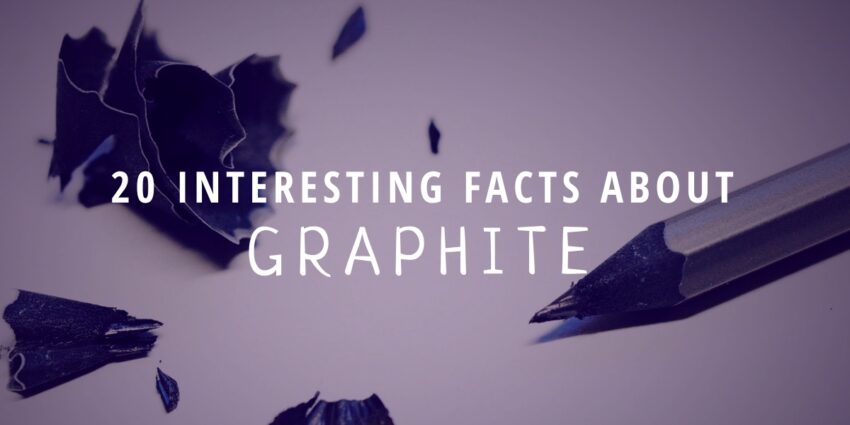Graphite, referred to as plumbago in the early eras, is a crystalline form of the element carbon with its atoms arranged in a hexagonal structure. It occurs naturally in this form and is the most stable form of carbon under standard conditions. Under high pressures and temperatures it converts to diamond. Graphite is used in pencils and lubricants. Its high conductivity makes it useful in electronic products such as electrodes, batteries, and solar panels.
Be sure to check out all other critical raw materials (CRMs), as well.
Beyond the elemental basics what else should we know about graphite? Check out the 20 interesting facts below!
- Graphite is a mineral that forms when carbon is subjected to heat and pressure in Earth’s crust and in the upper mantle. Pressures in the range of 75,000 pounds per square inch and temperatures in the range of 750 degrees Celsius are needed to produce graphite.
- Most of the graphite seen at Earth’s surface today was formed at convergent plate boundaries where organic-rich shales and limestones were subjected to the heat and pressure of regional metamorphism. This produces marble, schist, and gneiss that contain tiny crystals and flakes of graphite.
- In 1789, Abraham Gottlob Werner named graphite for its ability to leave marks on paper and other objects.
- The word “graphite” stems from “graphein”, meaning “to write/draw” in ancient Greek.
- The modern pencil was invented in 1795 by Nicholas-Jacques Conte, a scientist serving in the army of Napoleon Bonaparte.
- The use of graphite as a refractory material began before 1900 with the graphite crucible used to hold molten metal.
- Today, pencils are a small but significant market for natural graphite. Around 7% of the 1.1 million tonnes produced in 2011 was used to make pencils.
- Graphite is used as a lubricant by locksmiths and for bearings operating in vacuum or at high temperatures.
- Because it is both conductive and slippery, graphite is used in generator brushes.
- Graphite is a mineral of extremes. It is extremely soft, cleaves with very light pressure, and has a very low specific gravity. In contrast, it is extremely resistant to heat and nearly inert in contact with almost any other material. These extreme properties give it a wide range of uses in metallurgy and manufacturing.
- Graphite is the only non-metal that can conduct electricity. Graphite conducts electricity well due to delocalized electrons.
- Natural graphite is subdivided into three types of material: Amorphous, Flake, and High Crystalline.
- Crystals of graphite are relatively rare and most often occur in marble.
- Because graphite is resistant to heat and slows neutrons, it was used in the early years of nuclear-power research as a matrix to contain radioactive fuel elements and moderate their chain reaction.
- Some of the world’s greatest art was rendered in graphite.
- Most graphite used is manufactured from coal in electrical furnaces, not mined.
- Natural and synthetic graphite are used to construct the anodes of most major battery technologies.
- Although graphite and diamond may appear to have little in common with one another, the two minerals are actually polymorphs. Polymorphs are minerals that have the same chemical composition (in this case, carbon), but different crystal structures.
- Although graphite and diamond have the same chemical composition, their different crystal structures give them very different physical characteristics.
- In graphite, carbon atoms are linked in hexagonal sheets resembling chicken-wire fencing. These sheets slide over each other easily, which accounts for graphite’s slipperiness and low hardness. In diamond, carbon atoms are linked in a potentially endless matrix of tetrahedra (four-cornered pyramids), an extremely strong arrangement.
